#rhynchocephalian
Text
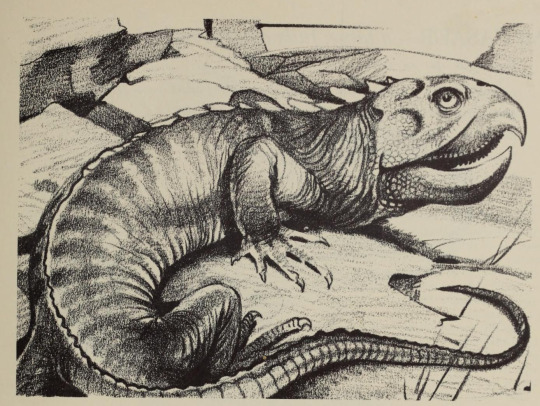
Rhynchocephalian. From Prehistoric Animals, written/illustrated by William E. Scheele. 1954.
158 notes
·
View notes
Photo
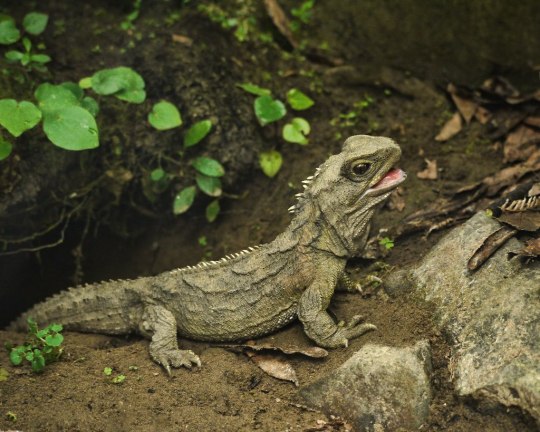
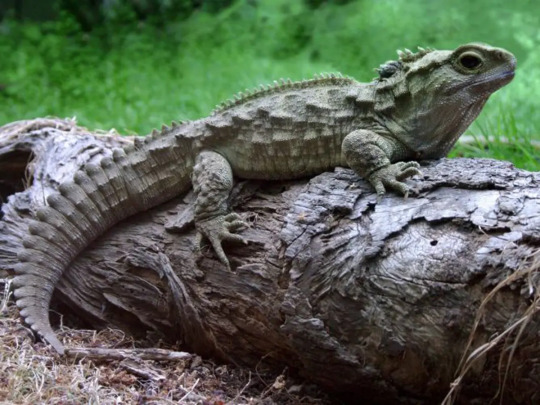
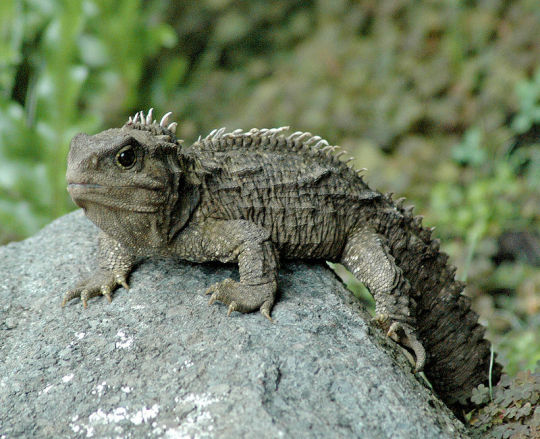
The Tuatara is a species of reptile endemic to New Zealand and its surrounding islands, belonging to the genus Sphenodon. Their name derives from the Māori language, and means "peaks on the back" referencing their unique spiny vertebral crests. Although resembling most lizards, they are part of a unique lineage of reptiles, the order Rhynchocephalia, which originated in the Triassic period around 250 million years ago and flourished throughout the Mesozoic until being near completely wiped out by the KPG mass extinction event some 66 million years ago. Tuatara are typically a mix of green, brown, and gray in color, measure upwards 31 inches in length and upwards of 3lbs in weight. They sport a spiny white crest along the back, two rows of teeth in the upper jaw overlapping one row on the lower jaw, and are able to hear remarkably well despite lacking an external ear. They are also unusual in having a pronounced photoreceptive third eye, which is thought to be involved in sensing circadian and seasonal cycles. Tuataras thrive in temperatures much lower than those tolerated by most reptiles, and hibernate during winter. Their diet consists of insects, arachnids, crustaceans, other arthropods, frogs, lizards, and bird eggs. While juveniles are diurnal, adults are typically nocturnal or crepuscular depending on the season, spending the day inside of shallow burrows which they may share with seabirds such as petrels, prions, and shearwaters. Tuatara probably have the slowest growth rates of any reptile taking 10 to 20 years to reach sexual maturity, and up to 35 years to reach full size. Mating occurs in midsummer typically once every four years. Mothers lay 2 to 19 white, soft-shelled eggs in nesting burrows, which are covered and incubated for 12 to 15 months before hatching. Barring tortoises, tuataras have the longest lifespan of any reptile with individuals regularly living well past 100 years.
37 notes
·
View notes
Text

Opisthiamimus
Opisthiamimus — вимерлий рід невеликих ринхоцефалів-еусфенодонтів з верхньої юри моррісонської формації Північного Вайомінгу, США. Типовий вид, O. gregori, відомий за чотирма зразками, які разом демонструють майже повний скелет.
Повний текст на сайті "Вимерлий світ":
https://extinctworld.in.ua/opisthiamimus/
#opisthiamimus#jurassic#jurassic period#wyoming#usa#north america#rhynchocephalian#art#gregori#paleontology#paleoart#prehistoric#animals#prehistory#science#illustration#ukraine#ukrainian#animal art#extinct#fossils#палеоарт#тварини#наука#ua#арт#україна#українська мова#мова#daily
12 notes
·
View notes
Text
#1962 - Sphenodon punctatus - Tuatara
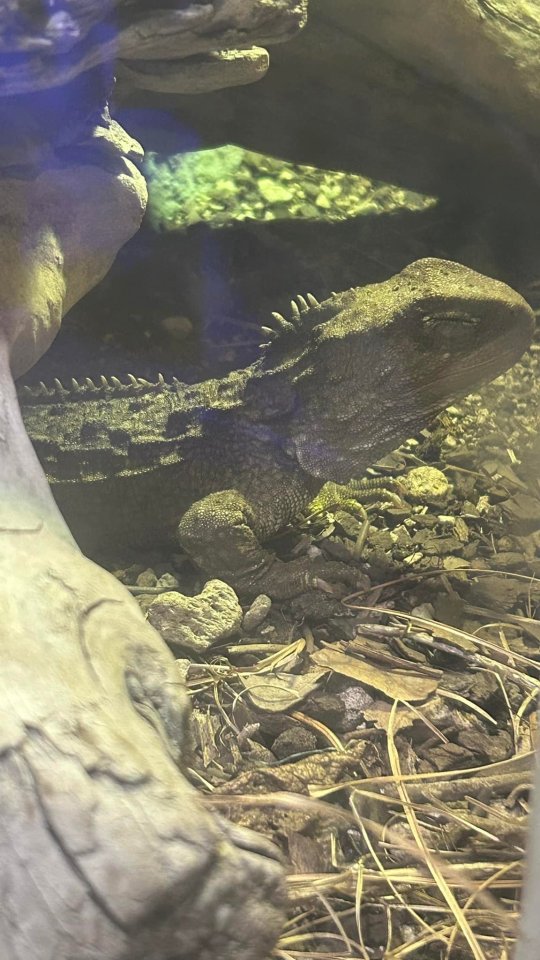
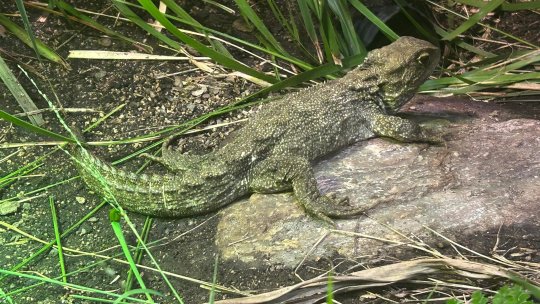
The name tuatara is derived from the Māori language and means "peaks on the back". The generic name refers to the wedge-shaped teeth.
New Zealand’s most famous reptiles, but despite their appearence they’re not lizards. The only surviving member of the order Rhynchocephalia, that originated during the Triassic (~250 million years ago) and with the exception of this lineage, were extinct by 60 million years ago
Tuatara are greenish brown and grey, and measure up to 80 cm from head to tail-tip. Uniquely for living species, they have two rows of teeth in the upper jaw overlapping one row on the lower jaw. They have no external ear opening, and a number of other skull details that were the first hint that these weren’t actually lizards.
One of those oddities is the very well-developed parietal eye, on the forehead - complete with a lens, retina and degenerate nerve connection to the brain. It’s not sure what use they actually are.
Tuatara do best in temperatures much lower than those tolerated by most reptiles, and remain active in temperatures as low as 5 °C (41 °F), and hibernate during winter. Temperatures over 28 °C (82 °F) are generally fatal. Tuatara are carnivores, and cannibalistic, and highly territorial. They take ten to twenty years to reach sexual maturity, and live in burrows they either dig themselves or commandeer from burrowing birds. Small birds such as Fairy Prions might also serve as lunch.
Tuatara were extinct on the mainland (thanks to habitat loss and introduced predators such as the Polynesian Rat) with the remaining populations confined to 32 offshore islands, until some were released into the heavily fenced Karori Wildlife Sanctuary in 2005. A tuatara nest was uncovered during maintence work in 2008, with a hatchling found the following autumn - quite possibly the first tuatara breeding on the North Island in over 200 years. Unfortunately Tuatara have temperature-dependent sex determination - lower egg incubation temperatures lead to females while higher temperatures lead to males. This bodes ill for the future, with accelerating climate change.
3 notes
·
View notes
Photo
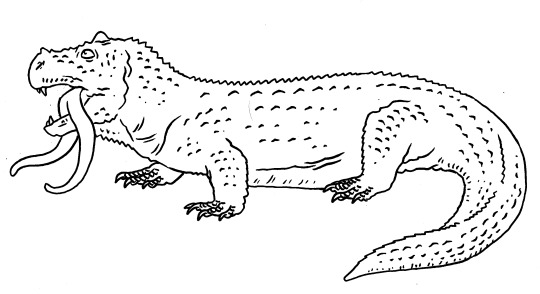
Picture by Timothy Morris
Pictured is a Huddle from Fellow Tetrapod. It is a large rhynchocephalian reptile, related to tuataras. It has a long, low body with stubby legs. Its mouth is open, showing the forks of its large manipulatory tongue.
#fellow tetrapod#daniel m bensen#speculative evolution#tuatara#science fiction#serial fiction#royal road#rhynchocephalian
4 notes
·
View notes
Text


Rhynchocephalians are an interesting group. They're the sister group of the squamates (snakes and lizards) and used to be a similarly diverse, but only the tuatara from Aotearoa is left of them these days.
1 note
·
View note
Note
hi, im a vet student and we just learnt about the parietal eye or "third eye" that some reptiles especies have and, well, im curious. do snakes have them? if not, do you know any reptiles that do? what do they use it for?
Hello hello - parietal eyes are really cool, huh? Snakes don't have them, but most lizards do.
In reptiles, the parietal eye is mostly a tool for regulating their circadian rhythm. It's covered by a thin layer of skin, but it can still pick up on light changes to help the reptile figure out what time of day it is. Light changes detected by the parietal eye actually trigger the production of hormones to encourag the reptile to thermoregulate! It's honestly used less as an eye and more as a tool for thermoregulation, which explains why mammals lost them - they're not needed for endothermic animals!
Like I said, the parietal eye is covered by a thin layer of skin, but you can see it really well on adult green anoles:

If you have a pet bearded dragon, you can see their parietal eye, too! Look for a little circle-shaped patch in the middle of their head behind their eyes.

Of all reptiles, the ones with the most well-developed parietal eyes are the tuatara. Tuatara look like lizards, but they're not - they're the sole living members of the sister order to Squamata (scaled reptiles, lizards and snakes): the Rhynchocephalia. The fact that tuatara have such well-developed parietal eyes tells us that most other rhynchocephalians probably did, too.

672 notes
·
View notes
Text
reptiles are the only TRUE genders
all of these clades can be found on the wikipedias
#trans#nonbinary#reptiles#birds#dinosaurs#prehistoric life#genderqueer#this post was made by a nonbinary intersex individual plz just go along with the joke#poll
420 notes
·
View notes
Text

#Archovember Day 30 - Scutellosaurus lawleri
For our final archosaur, we head to Arizona, USA during the Early Jurassic. Scutellosaurus lawleri was a basal thyreophoran, part of the group which would lead to stegosaurs, nodosaurs, parankylosaurs, and eventually ankylosaurs. But in the Early Jurassic, thyreophorans were small and lightly built, a far cry from the lumbering tanks they would someday become. Scutellosaurus was mostly bipedal, using its long tail as a counterbalance. It had several hundred osteoderms covering its whole body and forming parallel rows, some flat and some pitted.
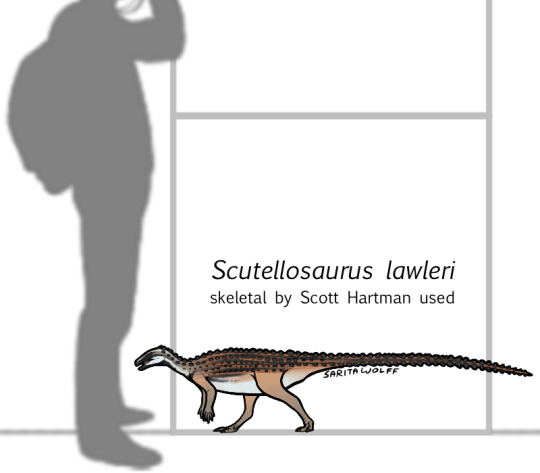
As more than 70 specimens are known, Scutellosaurus lawleri was probably a fairly common animal. It has been found all over the Kayenta Formation. Its excess of osteoderms was likely due to the amount of predators here. It would have had to look out for the theropods Coelophysis, Kayentavenator, and the apex predator Dilophosaurus. It also lived alongside other herbivorous dinosaurs like the sauropodomorph Sarahsaurus. Early pterosaurs, like the dimorphodontid Rhamphinion, and pseudosuchians like Kayentasuchus also lived here, as well as a variety of early frogs, salamanders, rhynchocephalians, and small synapsids. This environment was an ever changing floodplain, experiencing rainy summers and dry winters at the edge of a large desert.
#my art#SaritaDrawsPalaeo#Scutellosaurus lawleri#Scutellosaurus#thyreophorans#ornithischians#dinosaurs#archosaurs#archosauromorphs#reptiles#Archovember#Archovember2023
20 notes
·
View notes
Note
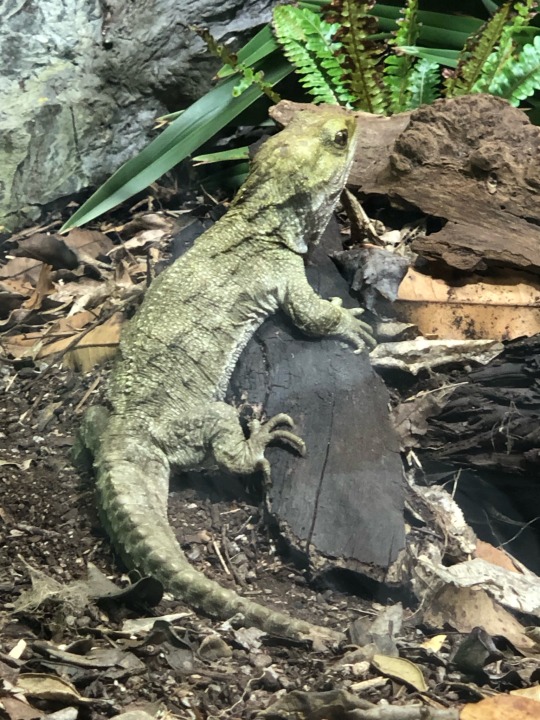

I went to the Zoo with my friends today, saw these Tuataras and thought of you!
WOW!! IT'S TUATARAS!!! I love New Zealand's endemic reptiles. I had no idea about these guys being the last extant member of the Rhynchocephalians until very recently.
This might be out of pocket, but I have an inside joke with my sister that tuataras are the creatures that write all of the ChatGPT responses. This is what's answering you when you type something

9 notes
·
View notes
Text

Anatomy idea for mandrakes since I wanted to make them weirder. They are smallish (~3ft/ 1m tall) hind wing flyers from a large island chain that was magically separated from the main earth-like biotope, with many niches occupied by rhynchocephalians like themselves. They decended from a sharovipteryx-like rhynchocephalian ancestor that eventually achieved powered flight.
They have a very developed parietal (third) eye which aids them in navigation, circadian rhythm, and coordination when flocking. Their main eyes are very acute, with good color and motion vision. They have good night vision as well, with multiple rod types giving them nighttime color vision like the modern tuatara.
Unlike their vision, mandrake hearing is very poor. They can only reliably hear a small range of low frequency sounds. While they will sometimes make rumbling and croaking vocalizations, most mandrake language consists of body language and sign.
21 notes
·
View notes
Text
you know what? Fuck it, LOZ spec biology headcanons
excluding Hylians, Gerudo, and any basically human and/or most magical/chimeric beings and monsters in hyrule…
The Zora are squamates distantly related to the mosasauridae.
The Rito are caracaras that became convergent with eagles and teratorns (extinct relatives of new world vultures.)

Basically This but lankier
Gorons come from of an odd offshoot of basal saurischians (“lizard hipped” dinosaurs like theropods and sauropods) that convergently evolved armor and spacializaed into durophagy and eventually, geophagy.
Zonai are dasyuridae marsupials (quokkas, Tasmanian devils, and the extinct thylacine.) and you can rob that headcanon from my cold, dead hands.
Bokoblins, moblins, and horrorblins are all pig-convergent, derived Eulipotyphlains (hedgehogs, and solenodons, and European moles.)
lizalfos are also squamates, like the Zora. But despite their appearance, they are distant relatives of chameleons.
Aerocudas and frox are both amphibians
finally, hinoxes and moldugas are both megafaunal suids and rhynchocephalians respectively.
#tw swearing#it’s Only in the description dw#speculative evolution#speculative biology#loz#headcanon#not meant to be taken seriously#text post#yeah#Developing this for a loz au#loz headcanons#might make a part 2 with the other sapient beings of the Loz series
6 notes
·
View notes
Photo

Scientists Discover Bug-Eating Reptile That Lived Among Dinosaurs
Delicate fossil reveals a cousin of the modern tuatara
The Morrison Formation is a fossil wonderland. Inside these layers of multi-colored sedimentary stone, the remains of Allosaurus, Stegosaurus, Apatosaurus and more have been found through more than a century of fossil hunting. But these Jurassic rocks contain far more than the bones of “terrible lizards” that lived large. Fossils of small creatures have been filling in what the world of the Morrison Formation was really like, including a new fossil reptile with ties to the modern tuatara.
Named Opisthiamimus gregori, the small creature was a bug-hunting reptile that lived in Wyoming roughly 150 million years ago. Despite the animal’s lizard-like appearance, however, it was not a lizard.
Instead, it belonged to a different group of reptiles known as rhynchocephalians. Described by Smithsonian National Museum of Natural History paleontologist Matthew Carrano and colleagues today in the Journal of Systematic Paleontology, Opisthiamimus was part of that group that flourished in the time of the dinosaurs but is only represented by the tuatara of New Zealand today...
Read more: https://www.smithsonianmag.com/science-nature/scientists-discover-bug-crunching-reptile-that-lived-among-dinosaurs-180980757/
72 notes
·
View notes
Text

Patagosphenos
Patagosphenos — вимерлий рід дзьобоголових (Rhynchocephalia) з пізньокрейдової формації Хуінкул в Аргентині. Рід містить один вид — Patagosphenos watuku.
Повний текст на сайті "Вимерлий світ":
https://extinctworld.in.ua/patagosphenos/
#patagosphenos#paleoart#cretaceous#paleontology#cretaceous period#art#argentina#south america#late cretaceous#animals#rhynchocephalian#ua#prehistoric#article#ukraine#ukrainian#палеоарт#палеонтологія#science#fossils#аргентина#наука#тварини#мова#україна#українська мова#арт#український тамблер#creatures#prehistory
10 notes
·
View notes
Text
I wish there were big lepidosaur blogs just to make people appreciate squamates. Of all tetrapods, lepidosaurs seem to be the least appreciated. It’s probably because of them not being fluffy and therefore, not seen as cute. Snakes especially have it bad with how widespread the fear of them are.
Other reptiles (especially birds) have some level of popularity, even if not much as mammals, so why are lepidosaurs given so little love? Yeah, birds are the last surviving dinosaurs, but tuataras are the last surviving rhynchocephalians! I just wish that there was more love for lepidosaurs, okay?
3 notes
·
View notes
Text
A new clevosaurid (Lepidosauria: Rhynchocephalia) from the Upper Triassic of India
Published 3rd August 2023
A new clevosaurid, Clevosaurus nicholasi, from the Upper Triassic Tiki Formation in India is described based on partial material.
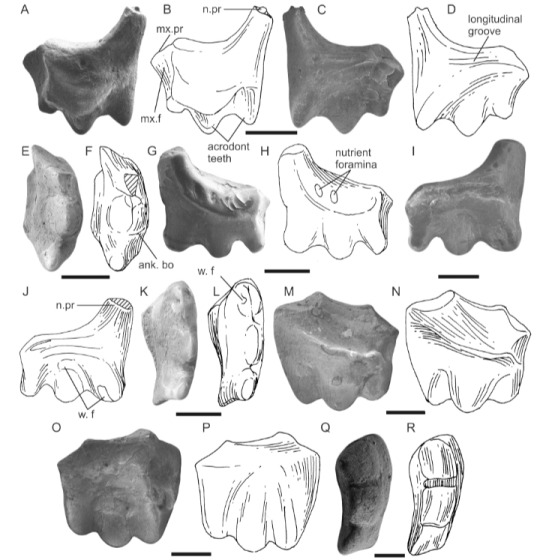
Clevosaurus nicholasi partial premaxilae

Clevosaurus nicholasi middle portions of manidbular
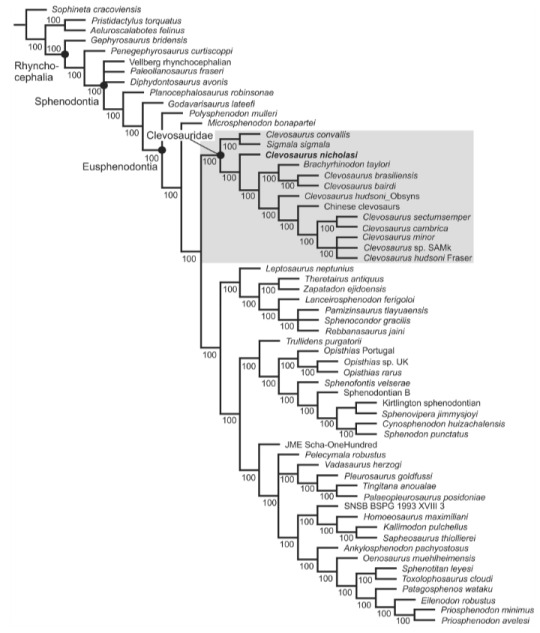
phylogenetic anaylsis of Clevosaurus nicholasi

Artist reconstruction of Clevosaurus hadroprodon, a different species of clevosaurid, by Jorge Blanco. from
Source:
2 notes
·
View notes